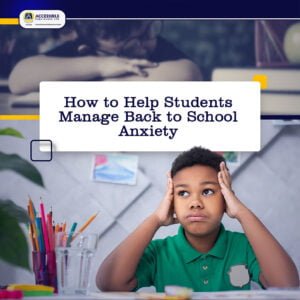Bullying is a pervasive issue that has far-reaching consequences for the well-being and academic performance of students. It creates an environment of fear, anxiety, and low self-esteem, which can have long-lasting effects on a child’s mental health and overall development. However, with the right strategies and interventions, teachers and parents can play a crucial role in preventing bullying in schools.
Definition of Terms
Bullying is defined as unwanted, aggressive behaviour that involves a real or perceived power imbalance. It can take various forms, including physical, verbal, relational, or cyberbullying. It is important to understand that bullying is not just a harmless rite of passage; it is a serious issue that requires immediate attention and action.
Bullying can take various forms. Below are a few examples:
Types of Bullying
1. Verbal bullying: This can be seen as saying or writing mean things about someone. Verbal bullying includes: Teasing, name-calling, inappropriate sexual comments, taunting, threatening to cause harm
2. Social bullying: This can also be referred to as relational bullying, which involves hurting someone’s reputation or relationships. Social bullying includes: Leaving someone out on purpose, telling other children not to be friends with someone, spreading rumours about someone, or embarrassing someone in public.
3. Physical bullying: This involves hurting a person’s body or possessions. Physical bullying includes: Hitting, kicking, pinching, pushing, taking or breaking someone’s things, making mean or rude hand gestures etc.
4. Cyberbullying:
Sending mean texts, emails, posting embarrassing photos/videos of someone online, creating fake profiles to impersonate and harass someone or spreading hurtful rumors through social media.
5. Sexual bullying:
Making unwanted sexual comments, inappropriate touching, gestures or advances.
As well as spreading sexual rumours or comments about someone’s sexuality.
6. Prejudicial bullying:
Bullying based on race, ethnicity, religion or cultural background. Using slurs, bias or hate language towards someone’s identity or even discriminating against someone’s disability or gender.
It’s important to remember that bullying can also be a combination of these above-listed forms.
Additionally, the impact of bullying can be just as damaging regardless of the form it takes. This is because all forms of bullying can lead to feelings of isolation, depression, Low self-esteem, anxiety, academic difficulties and even suicidal thoughts in victims.
Therefore, preventing bullying is a shared responsibility. The Onus lies both on the parents and teachers to create a friendly environment free of bullying of any sort.
Here are Some Key Strategies for Teachers to Curb Bullying
a. Establish a Clear Anti-Bullying Policy: Schools should have a well-defined policy that outlines the consequences of bullying behaviour and the steps that will be taken to address it.
b. Promote a Positive School Climate: Foster an environment of respect, inclusivity, and acceptance by encouraging open communication and promoting diversity.
c. Educate Students about Bullying: Integrate lessons on bullying prevention into the curriculum, discussing its effects, recognizing signs of bullying, and teaching conflict resolution skills.
d. Supervise and Monitor: Be vigilant in observing student interactions, both in-person and online, and intervene promptly when bullying behaviour is detected.
e. Encourage Open Communication: Create channels for students to report incidents of bullying confidentially and encourage them to speak up if they witness bullying happening to others.
Measures for Parents to Prevent Bullying
a. Open Communication: Encourage open and honest communication with your child. Listen to their concerns and be attentive to any changes in behaviour or mood that may indicate bullying.
b. Build Self-Esteem: Promote a positive self-image and help your child develop resilience and confidence to stand up against bullying behaviour.
c. Teach Empathy and Respect: Model and reinforce the importance of respect, kindness, and empathy towards others, regardless of differences.
d. Collaborate with School: Maintain open lines of communication with teachers and school administrators to address any bullying incidents promptly.
e. Monitor Online Activity: Be aware of your child’s online activities and educate them about cyberbullying and safe internet practices.
Conclusion
To wrap up, bullying is a complex issue that requires a multifaceted approach involving teachers, parents, and the entire school community. By implementing effective strategies, we can create a safe and inclusive environment where every child can thrive and reach their full potential. Remember, it takes collective effort and vigilance to prevent bullying and ensure the well-being of our students.
Check out our literature catalogue to discover an array of titles that can help motivate children to keep turning the pages. It’s time to explore and embark on an enriching literary journey.
Click this link to learn more about us here!







Registrácia
8 Dec 2024Thanks for sharing. I read many of your blog posts, cool, your blog is very good.
create binance account
22 Dec 2024Thank you for your sharing. I am worried that I lack creative ideas. It is your article that makes me full of hope. Thank you. But, I have a question, can you help me?
Binance US Pagpaparehistro
25 Dec 2024Your article helped me a lot, is there any more related content? Thanks!
"oppna ett binance-konto
15 Jan 2025Thank you for your sharing. I am worried that I lack creative ideas. It is your article that makes me full of hope. Thank you. But, I have a question, can you help me?
www.binance.com注册
3 Mar 2025Your article helped me a lot, is there any more related content? Thanks! https://accounts.binance.com/en-IN/register-person?ref=UM6SMJM3